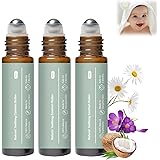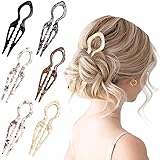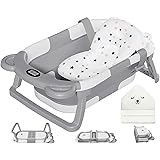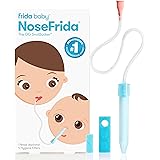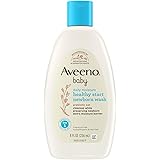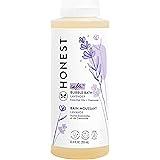When you first embark on the incredible journey of parenthood, it often feels like stepping into a vast, uncharted ocean. The sheer volume of choices, from tiny onesies to robust strollers, can be overwhelming. Every new parent yearns to provide the absolute best for their little one, ensuring their comfort, safety, and healthy development. That desire for excellence is often what leads us to seek out reliable guidance, much like the insights offered in the video above, which beautifully encapsulates the essence of effective infant care.
Indeed, navigating the world of essential baby care products and mastering the art of thoughtful baby care tips are two critical pillars for any new caregiver. It’s not just about acquiring items; it’s about understanding their purpose, how to use them effectively, and how they integrate into a holistic approach to nurturing your infant. By delving deeper into these aspects, we can transform apprehension into confidence, creating a loving and secure environment for our newest family member.
Establishing the Essentials: Foundational Baby Care Products
The foundation of effective baby care begins with a curated selection of high-quality products. Rather than a “more is better” approach, discerning parents prioritize safety, functionality, and suitability for delicate infant needs. These foundational items address the core requirements of daily living, from hygiene to rest.
Diapering: Keeping Baby Comfortable and Clean
Diapering is arguably the most frequent baby care task, making the choice of products here paramount. Whether you opt for disposable or cloth diapers, absorbency and fit are key to preventing leaks and irritation. Disposable options often boast features like wetness indicators and superior absorbency, making changes a breeze for busy parents.
Accompanying diapers are gentle wipes, ideally fragrance-free and hypoallergenic to protect sensitive skin. Diaper cream is another non-negotiable, acting as a barrier to prevent diaper rash and soothe any existing redness. Zinc oxide-based creams are widely recommended by pediatricians for their protective and healing properties.
Bathing Rituals: Gentle Cleansing for Delicate Skin
Bathing a newborn requires a delicate touch and appropriate products designed for their immature skin barrier. A dedicated baby tub provides a safe, comfortable space for bathing, often featuring non-slip surfaces and ergonomic designs. Opt for mild, pH-balanced baby wash and shampoo that are tear-free and free from harsh chemicals, dyes, and parabens. These formulations are specifically designed to clean without stripping natural oils.
Soft hooded towels, made from cotton or bamboo, are perfect for wrapping up your little one after their bath, maintaining body temperature and adding a cozy touch. Remember, sparse bathing (2-3 times a week for newborns) is often sufficient to prevent skin dryness, focusing on thorough cleaning during diaper changes and spit-up incidents.
Feeding Fundamentals: Nourishment and Hygiene
For bottle-fed infants, selecting the right bottles and nipples is crucial for successful feeding. Bottles come in various materials (glass, plastic, silicone) and designs, with anti-colic features being a popular choice to reduce gas and discomfort. Nipple flow rates must correspond to your baby’s age and sucking ability, starting with slow-flow for newborns.
Sterilizing equipment—whether through boiling, steam, or UV sterilizers—is vital for maintaining hygiene, especially in the early months. Burp cloths, soft and absorbent, are indispensable tools for catching spit-up and protecting clothing. For breastfeeding mothers, nursing pillows, breast pumps, and milk storage solutions become part of the essential feeding toolkit, each designed to support a successful and comfortable feeding journey.
Sleep Sanctuary: Prioritizing Safe Rest
Creating a safe sleep environment is one of the most critical baby care tips. A firm crib mattress covered with a fitted sheet is paramount for infant safety, preventing suffocation risks. Cribs should meet current safety standards, with no dropsides and appropriate slat spacing.
Instead of loose blankets, which pose a SIDS risk, sleep sacks or wearable blankets are highly recommended. These provide warmth without the danger of covering the baby’s face. Room-darkening curtains, a white noise machine, and a comfortable room temperature (typically 68-72°F or 20-22°C) also contribute to a conducive sleep environment, promoting longer, more restful sleep for both baby and parents.
Mastering the Art: Indispensable Baby Care Tips
Beyond the products, effective baby care hinges on informed practices and a deep understanding of your infant’s needs. These indispensable tips empower parents to respond confidently to various scenarios, fostering health, development, and a strong parent-child bond.
Skin Care Sensibilities: Protecting Baby’s Delicate Barrier
A baby’s skin is incredibly delicate and prone to dryness, eczema, and rashes. Beyond choosing hypoallergenic products, daily moisturizing with a gentle, fragrance-free lotion can help maintain the skin barrier’s integrity. Pay close attention to creases in the neck, arms, and legs, ensuring they are kept dry to prevent irritation.
For common issues like cradle cap, gentle massage with baby oil or mineral oil, followed by a soft brushing, can help loosen scales. Always consult your pediatrician for persistent or severe skin conditions, as they can accurately diagnose and recommend appropriate treatments. Avoiding overly hot baths and prolonged water exposure is another key tip for maintaining healthy infant skin.
Safe Sleep Practices: Reducing Risks and Promoting Rest
The “ABC”s of safe sleep—Alone, Back, Crib—are fundamental in reducing the risk of Sudden Infant Death Syndrome (SIDS). Babies should always sleep alone in their own crib or bassinet, on their back, on a firm surface, free from bumpers, loose bedding, or soft toys. Room-sharing, but not bed-sharing, is encouraged for the first six to twelve months.
Maintaining a smoke-free environment and avoiding overheating are also crucial factors. Dress your baby in light sleepwear appropriate for the room temperature, ensuring they are comfortable without being too warm. Understanding and implementing these guidelines provides immense peace of mind for parents.
Responsive Feeding and Digestion: Nurturing Growth
Whether breastfeeding or formula feeding, responsive feeding—paying attention to your baby’s hunger cues (rooting, lip smacking, fussing) rather than strict schedules—is vital for establishing healthy eating patterns. Ensure proper latch or bottle positioning to minimize air intake, which can lead to gas and discomfort. Frequent burping during and after feeds is also a critical practice.
Monitoring wet and soiled diapers is a simple yet effective way to ensure your baby is getting enough nourishment. Constipation or excessive spitting up can indicate feeding issues, prompting a discussion with your pediatrician. Good hand hygiene before preparing feeds or handling bottles is non-negotiable for preventing illness.
Comforting and Soothing: Understanding Baby’s Language
Babies communicate through cries, and learning to interpret these sounds is a key parenting skill. Different cries can indicate hunger, fatigue, discomfort, or a need for connection. Swaddling, for newborns (until they show signs of rolling over), can provide a sense of security, mimicking the womb environment.
Gentle rocking, singing, talking softly, or offering a pacifier can effectively soothe a distressed infant. Skin-to-skin contact, often called “kangaroo care,” is not only comforting but also promotes bonding and helps regulate a baby’s heart rate and temperature. Remember, sometimes all a baby needs is a loving embrace and reassurance.
Health and Safety: Proactive Caregiving
Proactive health and safety measures are cornerstones of responsible baby care. Regular well-baby check-ups are essential for monitoring growth, development, and administering necessary immunizations. Knowing the signs of illness—such as fever, unusual lethargy, or difficulty breathing—and when to contact your pediatrician or seek emergency care is crucial.
Babyproofing your home well before your infant becomes mobile is another vital safety measure. This includes securing furniture, covering outlets, locking cabinets, and keeping hazardous substances out of reach. Basic infant first aid and CPR knowledge can also be incredibly empowering for parents in unexpected situations.
Navigating the Market: Choosing Baby Care Products Wisely
With an overwhelming array of baby care products available, making informed decisions is vital. Beyond brand recognition, a critical evaluation based on specific criteria ensures that what you bring into your home is truly beneficial and safe for your little one.
Prioritizing Safety Standards and Certifications
Always look for products that meet established safety standards, often indicated by specific certifications or regulatory body approvals. For cribs and car seats, adherence to national safety regulations is non-negotiable. Labels like “JPMA certified” (Juvenile Products Manufacturers Association) or “ASTM International” (American Society for Testing and Materials) for baby gear provide a layer of assurance regarding product safety and quality.
For skincare and hygiene products, look for terms like “pediatrician-tested,” “dermatologist-tested,” “hypoallergenic,” and “fragrance-free.” These designations indicate that products have undergone testing to minimize the risk of allergic reactions and irritation, aligning with the needs of sensitive infant skin.
Understanding Ingredients: What Goes On (and In) Baby
When selecting skincare products, scrutinize ingredient lists. Avoid harsh chemicals such as parabens, phthalates, sulfates, and synthetic fragrances, which can be irritating or have potential long-term health implications. Natural and organic ingredients are often preferred, but remember that “natural” doesn’t always mean non-allergenic. Patch testing new products on a small area of skin is a sensible precaution.
For feeding products, ensure plastics are BPA-free and that materials like silicone or glass are food-grade. For formula, understand the different types available and consult your pediatrician on the best choice for your infant’s nutritional needs and any specific dietary requirements or sensitivities they may have.
Durability, Practicality, and Longevity
Consider the durability and practicality of baby care products. Items like strollers, car seats, and high chairs represent significant investments, so choosing well-constructed models that can withstand frequent use and potentially grow with your child (e.g., convertible car seats) offers better value. Ease of cleaning is another practical consideration, especially for feeding and diapering accessories.
Multi-functional products can also simplify life and save space. For example, a playard with an integrated bassinet can serve multiple purposes in the early months. While it’s tempting to buy every new gadget, focus on items that genuinely simplify routines, enhance safety, or promote development, rather than those that offer fleeting novelty.
Leveraging Reviews and Expert Recommendations
Before making significant purchases, take advantage of readily available information. Online reviews from other parents can provide valuable real-world insights into a product’s performance and longevity. However, always read with a critical eye, looking for consistent themes rather than isolated opinions.
Pediatricians, lactation consultants, and certified child safety specialists are invaluable resources for expert recommendations. Their advice is often based on clinical experience and up-to-date research, providing a professional perspective that complements peer reviews. These combined insights ensure you are making the most informed decisions for your baby’s well-being.


